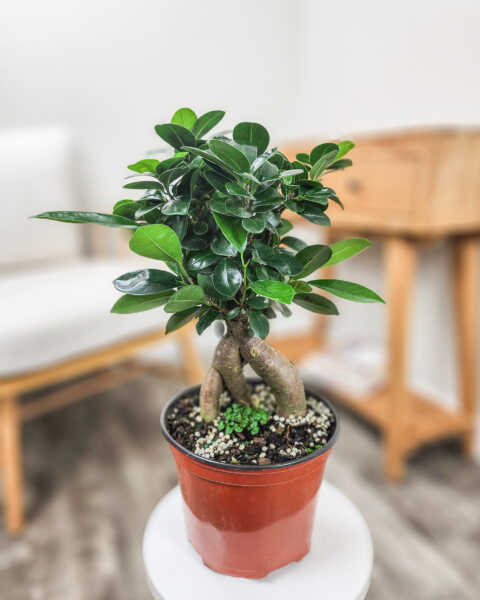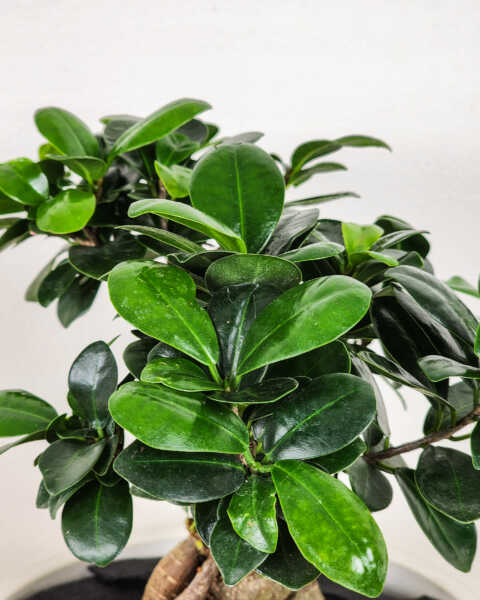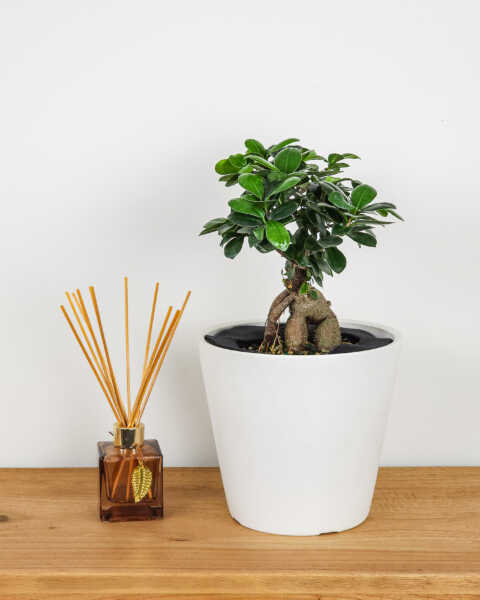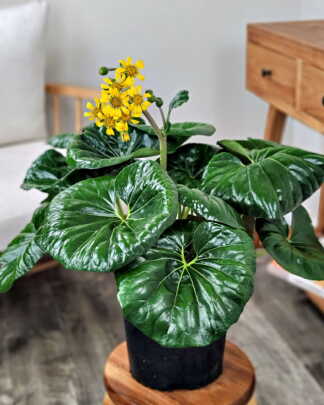Description
Add Some Zen to your Garden with a Bonsai Ficus
The Chinese Banyan, scientifically known as Ficus microcarpa, is a magnificent and resilient evergreen tree renowned for its expansive canopy and intricate root system. Originating from the tropical regions of Asia, it has gained worldwide popularity for its ornamental value and adaptability, thriving both outdoors in warm climates and indoors as a potted specimen. With its glossy, leathery leaves and robust structure, the Chinese Banyan is not only a symbol of longevity and strength but also an exceptional choice for bonsai enthusiasts and those looking to add a touch of nature’s majesty to their living spaces.
Caring for your Ficus Microcarpa
Ficus microcarpa requires attention to its basic needs, such as light, water, and humidity. With proper care, this beautiful plant can be a long-lasting and rewarding addition to your indoor garden. Its ability to adapt to various conditions makes it suitable for gardeners of all levels.
Light
Ficus microcarpa thrives in bright, indirect sunlight. It can tolerate some direct sunlight, but too much can scorch its leaves, while too little light may cause leaf drop and stunt growth. A spot near a window that receives filtered light is ideal. Rotate your plant periodically to ensure even growth.
Water
Watering is crucial for the health of your Ficus microcarpa. The plant prefers evenly moist soil but does not like to sit in water. Allow the top inch of soil to dry out before watering again. Over-watering can lead to root rot, while under-watering may cause the leaves to yellow and drop. In winter, reduce watering as the plant’s growth slows down.
Ficus microcarpa enjoys a humid environment, similar to its native tropical habitat. If your home is dry, especially in winter, consider using a humidifier or placing a humidity tray beneath the plant.
Fertilizing
Feed your Ficus microcarpa with a balanced, water-soluble fertilizer every month during the growing season (spring and summer). Reduce feeding to every other month in fall and winter. Over-fertilizing can lead to salt buildup in the soil, which can damage the roots, so ensure to follow the recommended dilution rates.
Pruning
Pruning helps maintain the desired shape of your Ficus microcarpa and encourages dense foliage growth. Use clean, sharp scissors or pruning shears to remove any dead or damaged leaves and branches. You can also prune to control the size of the plant. If you’re aiming for a bonsai appearance, more frequent trimming will be necessary.
Repotting
Repot your Ficus microcarpa every 2-3 years to ensure it has enough room to grow and to refresh the potting soil. Choose a pot that is slightly larger than the current one and has good drainage. Spring is the best time for repotting, as the plant is entering its active growth phase.
Pest and Disease Management
Ficus microcarpa can be susceptible to pests like aphids, mealybugs, and scale insects. Regularly inspect your plant for signs of infestation. If pests are detected, treat the plant with insecticidal soap or neem oil. Diseases such as root rot can be prevented by avoiding over-watering and ensuring proper drainage.
Propagation
Propagating Ficus microcarpa can be done through stem cuttings. Take a cutting of about 4-6 inches long, remove the lower leaves, and plant it in moist soil or water until roots develop. This is a rewarding way to create new plants for your home or to share with friends.

















Rob Benton –
Bought a cactus company very honest